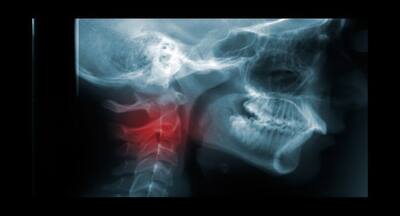Don’t Miss Out on the Latest Updates.
Subscribe to Our Newsletter Today!
Head and neck cancer treatment: Here are the most effective options

This is how head and neck cancer is treated.
Head and neck cancer is reportedly the most common cancer among Indian men. The reason for this is hardly surprising. The Indian obsession with tobacco and tobacco products including cigarettes, gutkha, pan masala, beedi etc is the primary cause of head and neck cancer in India. There are different types of surgeries and chemotherapy and radiation that are used for the treatment of head and neck cancer. Dr Surender K Dabas, Director, Head, Neck, Breast & Thorax Cancer, Fortis Hospital Shalimar Bagh says, "In a surgery, the cancerous tumour and some surrounding healthy tissue are removed. Radiation and chemotherapy are also commonly used." This is what you need to about the symptoms, causes, diagnosis and prevention of head and cancer.
Here are the types of surgery for head and neck cancer:
Laser technology: This is used to treat an early-stage tumour, especially those found in the larynx.
Also Read
Excision: This is an operation to remove the cancerous tumour and some surrounding healthy tissue which is known as a margin.
Robotic surgery: This is the latest development in the field of head and neck cancer. It is a minimally invasive technique in the management of throat and laryngeal cancer according to Dr Dabas.
Lymph node dissection or neck dissection: Dr Dabas explains that if cancer has spread, the doctor may remove lymph nodes in the neck. This may cause stiffness in the shoulders afterwards. This may be done at the same time as an excision.
Reconstructive (plastic) surgery: If a major tissue needs to be removed (jaw, skin, pharynx, or tongue), reconstructive or plastic surgery is done to replace the missing tissue and restore a person's appearance and the function of the affected area.
Radiation therapy: Radiation therapy is the use of high-energy x-rays to destroy cancer cells. Dr Dabas says, "There is a specific number of treatments given over a set period of time. Post surgery, radiation can also help destroy small areas of cancer that cannot be removed surgically." The most common type of radiation therapy is called external-beam radiation therapy. A type of external-beam radiation therapy is intensity-modulated radiation therapy (IMRT) which directs radiation beams at the tumour. This helps to reduce damage to the nearby healthy cells. Proton therapy, another type of external-beam radiation therapy, uses protons instead of x-rays. At this time, proton therapy is not a standard treatment option for most types of head and neck cancer
Chemotherapy: Chemotherapy is the use of drugs to destroy cancer cells, usually by ending the cancer cells' ability to grow and divide. Chemotherapy is given by an intravenous (IV) tube placed into a vein using a needle or in a pill or capsule that is swallowed (orally). A patient may receive one drug at a time or combinations of different drugs given at the same time. The side effects of chemotherapy vary from individual to individual and the dose used. Side effects of chemotherapy can include fatigue, the risk of infection, nausea and vomiting, hair loss, loss of appetite, and diarrhoea. These side effects usually subside after treatment is over.
Image source: Shutterstock


